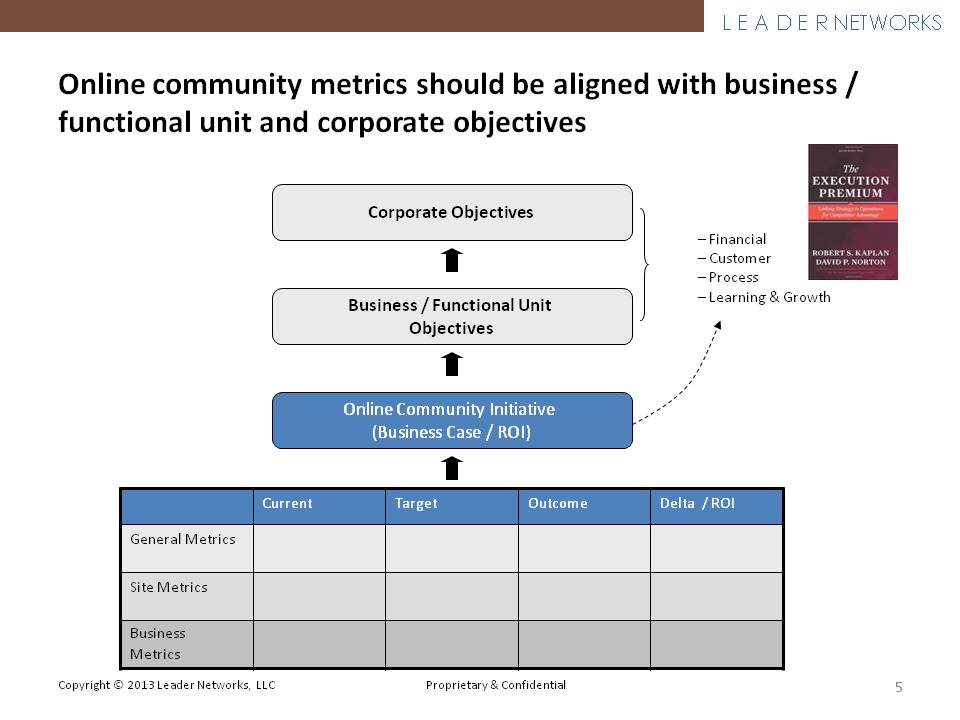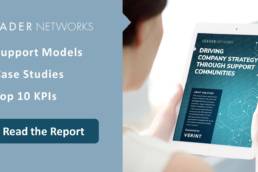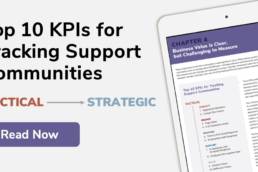 Useful, usable and engaging, these are the qualities that successful online customer communities are made of. But, while all good community leaders within an organization hold these core values close, when business stakeholders start asking for hard ROI metrics, most community teams get a little nervous about how to prove value and define success. So, when the “what has community done for me lately” question get launched, panic sets in and people start to make dashboards and spreadsheets and charts galore. Community managers send reports off to leadership with fingers crossed and a heavy heart because they know the data isn’t truly indicative. But they don’t know a better way to communicate outcomes. Consequently, and not surprisingly, the documents submitted rarely satisfy leadership’s key questions:
Useful, usable and engaging, these are the qualities that successful online customer communities are made of. But, while all good community leaders within an organization hold these core values close, when business stakeholders start asking for hard ROI metrics, most community teams get a little nervous about how to prove value and define success. So, when the “what has community done for me lately” question get launched, panic sets in and people start to make dashboards and spreadsheets and charts galore. Community managers send reports off to leadership with fingers crossed and a heavy heart because they know the data isn’t truly indicative. But they don’t know a better way to communicate outcomes. Consequently, and not surprisingly, the documents submitted rarely satisfy leadership’s key questions:
- What is the value of the online community to the organization?
- What is the value of the online community to the customers?
- Are these values aligned and if so how and in what ways?
Number of members, number of new members, length of time on site, number of posts (including all those “me too” submissions), top 100 content sources visited and the varied array of measures counted are all important to some degree, but they rarely tell the real story. This is because these metrics are too far removed from the business strategy and member needs to be meaningful. So, community budgets are cut, the cost-center label is assigned to them, and staff is given additional responsibility within the core operations outside of community because no one understands the value that community can or is bringing to the company.
Now this all-too-common tale of community woe can avoided provided you have a strong community to begin with and just suffer from the inability to articulate the ROI. What is missing here is the alignment of the business goals and objectives with the community operations. The real value of community is often found by looking to business definition of success and member definition of success- determining where the community works in support of the larger business goals and customer needs, and then determining in what ways they align.
For example, if customer retention is a core strategic goal – in what ways has online customer communities demonstrated or supported (qualitatively and quantitatively) alignment with this goal? Have more customers been able to self-serve problem resolution using the forums and therefore avoided the call center which costs the company money and rarely pleases the customer? Have the discussions on community bubbled up a defect or issue in advance of a crisis and therefore enabled product development to act quickly with a fix? These are types of core business values that community can often support. Look to marketing, product development, customer care, R&D, and of course sales to identify what driven them to succeed, and look for arenas where community has been in clear, demonstrable support.
In support of your community metric gathering activities, be sure to seek direct member feedback, and analyze data streams to infer feedback and issues. There is a wealth of data found in the interactive areas of the community, and these are just as powerful and important measures of success then the log data that provide fast numbers. Also, I recommend that you don’t automatically assume that the canned platform metrics measure what you want. The majority of online community platform metrics tools are crude at best, and there is a lot more information and nuances that can be gleaned from the community activity then often can be found in the software reports. And, finally, don’t just measure the obvious – engagement indices are important and useful but member value is the most important measure. e.g. lurkers can get high value!
Here is framework for community metrics in the content of business strategy to help you get started on this new path. By starting with the characteristics the community endeavors to embrace, you can set a solid foundation for determining ROI because you now have a business case example on which to hinge the measurement.
Steps to successfully measuring your online customer community:
STEP 1: Defining the member experience and member value propositions which lead to metrics.
STEP 2: Determine quantifiable measures (return visits, conversions from being to doing state, satisfaction with solution to need, etc.) that align with the value proposition.
STEP 3: Communicate outcomes in clear, easy to understand language that is rooted in the business case and uses the metrics to support the suppositions.
So next time you need to prepare your quarterly community metrics report, don’t cringe and scramble. Instead, take the opportunity to think long and hard about the business value community is, or should be bringing to the organization and start your measurement from that position of strength.
1 Comment
Add comment Cancel reply
This site uses Akismet to reduce spam. Learn how your comment data is processed.



[…] Keywords […]